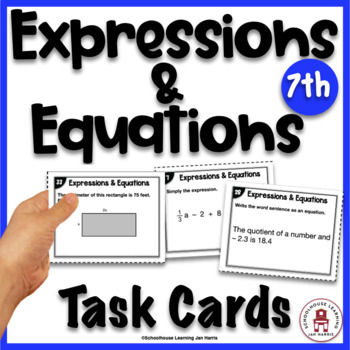Big Ideas Math Expressions & Equations Task Cards - 7th Grade Chapter 3
- PDF
What educators are saying
Description
NO PREP AND CCSS ALIGNED. This resource goes along with the 7th Grade Big Ideas Math Textbook, but it can be used with any 7th grade book. Enclosed you will find 35 task cards.
The task cards cover important concepts about Expressions & Equations. These cards are best used with the student textbook, or with my 7th Grade Big Ideas Interactive Notebook Foldables Ch. 3 Red Book. Check it out at: Big Ideas 7th Grade Math Interactive Notebook Foldables Chapter 3 - Red Book
There are 35 cards covering the following:
- Algebraic Expressions
- Adding and Subtracting Linear Expressions
- Solving Equations Using Addition or Subtraction
- Solving Equations Using Multiplication or Division
- Solving Two-Step Equations
Also included, you will find a student recording sheet and answer key.
These task cards can be used after teaching Chapter 3 of the Big Ideas Math for 7th grade or any 7th grade chapter on Expressions & Equations. They can be used as review before the Chapter 3 Test, or they can be used as an alternate assessment.
Other Uses Include:
- Morning Warm-Ups
- Quiz/Quiz/Trade
- Partner/Group Activity
- Exit Slips
- Activity for Early Finishers
- Test Prep
If you like these task cards, check out my store for more Big Ideas Math Resources!
Want to SAVE MONEY on TPT? Consider leaving feedback. For every review you leave, you earn points that you can put towards future purchases. Simply go to "My Purchases" to leave a review on products you have purchased.
All new resources are 50% off for the first 48 hours. Follow me and get notified of new resources and get in all the bargains!
Sincerely,





